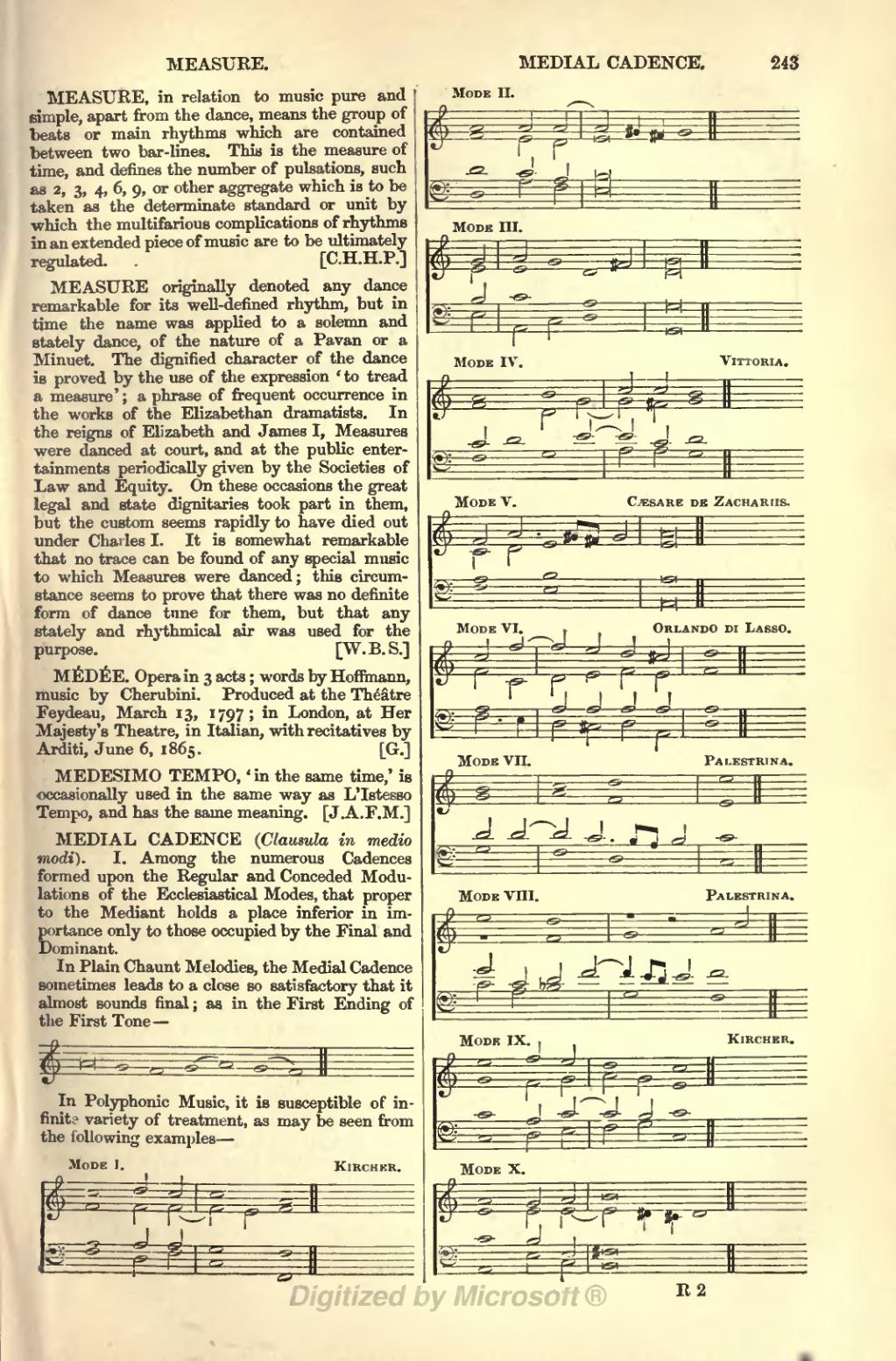MEASURE, in relation to music pure and simple, apart from the dance, means the group of beats or main rhythms which are contained between two bar-lines. This is the measure of time, and defines the number of pulsations, such as 2, 3, 4, 6, 9, or other aggregate which is to be taken as the determinate standard or unit by which the multifarious complications of rhythms in an extended piece of music are to be ultimately regulated.
[ C. H. H. P. ]
MEASURE originally denoted any dance remarkable for its well-defined rhythm, but in time the name was applied to a solemn and stately dance, of the nature of a Pavan or a Minuet. The dignified character of the dance is proved by the use of the expression 'to tread a measure'; a phrase of frequent occurrence in the works of the Elizabethan dramatists. In the reigns of Elizabeth and James I, Measures were danced at court, and at the public entertainments periodically given by the Societies of Law and Equity. On these occasions the great legal and state dignitaries took part in them, but the custom seems rapidly to have died out under Charles I. It is somewhat remarkable that no trace can be found of any special music to which Measures were danced; this circumstance seems to prove that there was no definite form of dance tune for them, but that any stately and rhythmical air was used for the purpose.
[ W. B. S. ]
MÉDÉE. Opera in 3 acts; words by Hoffmann, music by Cherubini. Produced at the Theatre Feydeau, March 13, 1797; in London, at Her Majesty's Theatre, in Italian, with recitatives by Arditi, June 6, 1865.
[ G. ]
MEDESIMO TEMPO, 'in the same time,' is occasionally used in the same way as L'Istesso Tempo, and has the same meaning.
[ J. A. F. M. ]
MEDIAL CADENCE (Clausula in medio modi). I. Among the numerous Cadences formed upon the Regular and Conceded Modulations of the Ecclesiastical Modes, that proper to the Mediant holds a place inferior in importance only to those occupied by the Final and Dominant.
In Plain Chaunt Melodies, the Medial Cadence sometimes leads to a close so satisfactory that it almost sounds final; as in the First Ending of the First Tone—

In Polyphonic Music, it is susceptible of infinite variety of treatment, as may be seen from the following examples—
| Mode I. | Kircher. |
 | |
| Mode II. | |
 | |
| Mode III. | |
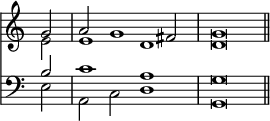 | |
| Mode IV. | Vittoria. |
 | |
| Mode V. | Cæsare de Zachariis. |
 | |
| Mode VI. | Orlando di Lasso. |
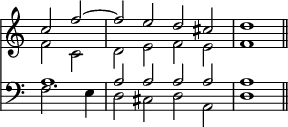 | |
| Mode VII. | Palestrina. |
 | |
| Mode VIII. | Palestrina. |
 | |
| Mode IX. | Kircher. |
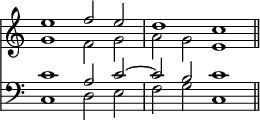 | |
| Mode X. | |
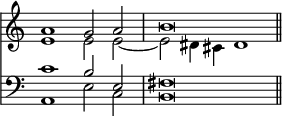 | |

